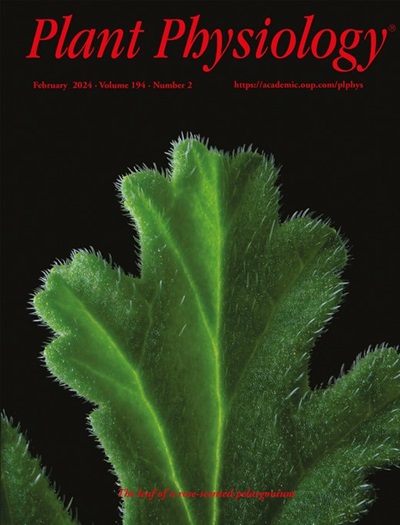Regulation of Crassulacean acid metabolism at the protein level in Kalanchoë laxiflora
IF 6.5
1区 生物学
Q1 PLANT SCIENCES
引用次数: 0
Abstract
Crassulacean acid metabolism (CAM) is an adaptation to environments where water availability is seasonal or extremely low. It serves to ensure plant survival and/or maintain productivity in these adverse environments. CAM has repeatedly evolved in many plant lineages, although it requires a large and complex set of enzymes, transporters, and regulatory processes to control metabolite flux and pools. To test the potential levels at which CAM is regulated, we analyzed the CAM plant Kalanchoë laxiflora and compared with the genomes and transcriptomes of other CAM plants across a wide phylogenetic range. We show that CAM-associated transcripts and proteins did not exhibit a binary on/off pattern in abundance between day and night in K. laxiflora. Instead, K. laxiflora and many CAM plants displayed shared amino acid changes among proteins compared to C3 plants, especially in starch metabolism. Phosphoproteomics identified differential phosphorylation in K. laxiflora proteins between day and night. Taken together, our results demonstrate that CAM photosynthesis is regulated at both the transcript and protein levels.Kalanchoë草属植物在蛋白质水平上对天冬氨酸代谢的调控
天冬肽酸代谢(CAM)是一种适应环境的水供应是季节性或极低。它的作用是确保植物在这些不利的环境中生存和/或保持生产力。CAM在许多植物谱系中反复进化,尽管它需要大量复杂的酶、转运体和调节过程来控制代谢物的通量和池。为了测试CAM被调控的潜在水平,我们分析了CAM植物Kalanchoë laxiflora,并与其他CAM植物的基因组和转录组进行了比较。研究结果表明,cam相关转录本和蛋白质在白天和黑夜之间并没有表现出二进制的开/关模式。相反,与C3植物相比,许多CAM植物在蛋白质中表现出相同的氨基酸变化,特别是在淀粉代谢方面。磷酸化蛋白质组学鉴定了白天和夜间柽柽树蛋白磷酸化的差异。综上所述,我们的研究结果表明,CAM光合作用在转录和蛋白质水平上都受到调节。
本文章由计算机程序翻译,如有差异,请以英文原文为准。
求助全文
约1分钟内获得全文
求助全文
来源期刊

Plant Physiology
生物-植物科学
CiteScore
12.20
自引率
5.40%
发文量
535
审稿时长
2.3 months
期刊介绍:
Plant Physiology® is a distinguished and highly respected journal with a rich history dating back to its establishment in 1926. It stands as a leading international publication in the field of plant biology, covering a comprehensive range of topics from the molecular and structural aspects of plant life to systems biology and ecophysiology. Recognized as the most highly cited journal in plant sciences, Plant Physiology® is a testament to its commitment to excellence and the dissemination of groundbreaking research.
As the official publication of the American Society of Plant Biologists, Plant Physiology® upholds rigorous peer-review standards, ensuring that the scientific community receives the highest quality research. The journal releases 12 issues annually, providing a steady stream of new findings and insights to its readership.
 求助内容:
求助内容: 应助结果提醒方式:
应助结果提醒方式:


